ST MARY'S BRIDGE CHAPEL HERITAGE WALK
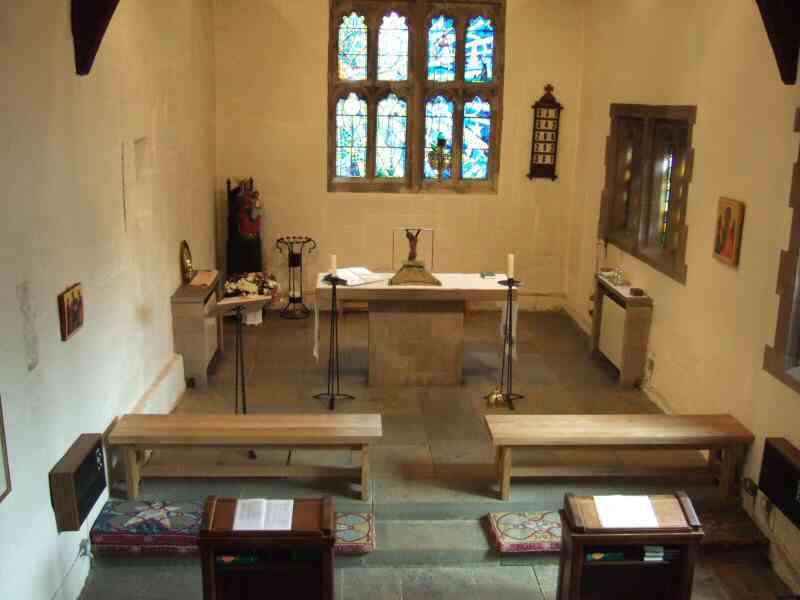
BRIDGE CHAPEL
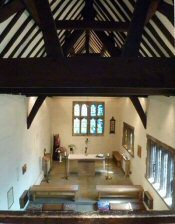
The chapel is one of only six bridge chapels left in England. It stands beside the 18th-century bridge, which replaced a medieval bridge to which the chapel was attached. The precise date when the first bridge chapel came into existence is uncertain. But, it was probably around the late 13th to the early 14th century. When it was built on the same site as the present chapel. At the time when the chapel was built, travel was a dangerous occupation. Robbery and murder were not uncommon and the chapel offered spiritual reassurance to travellers.
Toll Collection
St Mary’s Bridge Chapel also served as a collection point for tolls levied on traffic entering Derby. It was the only crossing point of the River Derwent into the town. And, it was the resident hermit’s responsibility to collect the tolls of people and livestock crossing the bridge. The hagioscope, or squint, on the north wall would have been used to monitor traffic. It also could be used by passers-by to see the light indicating the presence of the Blessed Sacrament. The chapel is open to the public for several days every year.
Bridge Chapel House
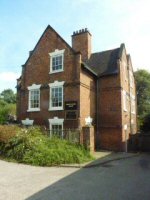
Bridge Chapel House adjoins the St Mary’s Bridge Chapel and is the permanent home of the Derbyshire Family History Society, a registered charity. It has around 2,000 members worldwide and acquired a lease on the house in February 1996. The bridge is remembered as the place where the Padley martyrs’ remains were hung outside the chapel, which at that time was serving as a gaol. They had been hung, drawn and quartered after being convicted of treason for their religious beliefs. The ‘red’ windows in St Mary’s Roman Catholic Church show the six Derbyshire Martyrs, three of whom were the Padley martyrs, who died for their faith.
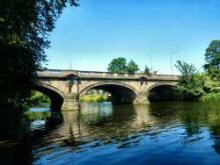
St Mary’s Bridge
The bridge is an impressive structure of neo-classical design built by Thomas Harrison of Chester, between 1789 and 1794. The original bridge piers can be viewed under the foundations of the chapel and other remnants of the medieval bridge are to be seen in the river when the water level is low. St Mary’s Bridge replaced a medieval bridge to which the chapel was attached and was built on the same site as the present chapel. The chapel is open to the public for several days every year.
THE WALK
A stunning walk of discovery for some and for others, a walk that brings back memories. The Museum of Making at the historic Silk Mill is a place you will never tire of visiting. The same applies to Derby Cathedral which is visited on the walk. To complete your itinerary undertake this walk on a day when St Mary’s Bridge Chapel is open. One of Derby’s hidden gems.
LOOK OUT FOR
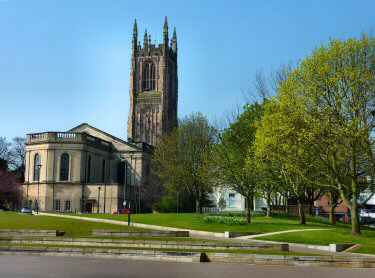

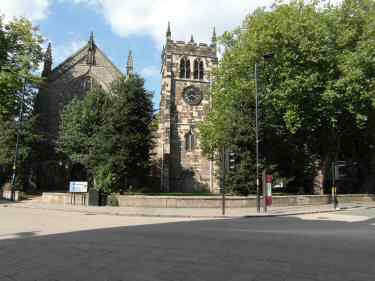
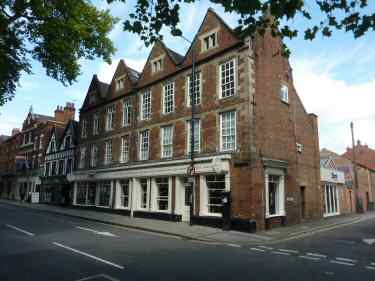
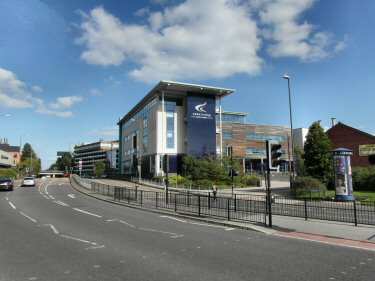
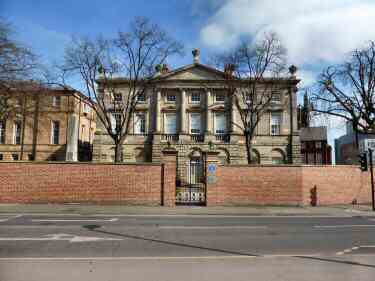
THE ROUTE
1. The walk starts from St Mary’s Bridge Chapel, where you go to the right when facing the chapel and turn sharp left into Sowter Road. Turn right to visit the Museum of Making at the Silk Mill, part of the Derwent Valley Mills World Heritage Corridor.
2. From the entrance to the museum walk up the path past Cathedral Green to Full Street. The Silk Mill public house replaced a former pub of the same name built on a slightly different site. On the outside wall is a mural depicting the Silk Trades’ Lockout of 1833/4. When hundreds of newly-joined trade unionists found themselves locked out because of their membership in a Trade Union. Eventually, strike pay ran out and the strikers began to return to work but 600 were not re-instated.
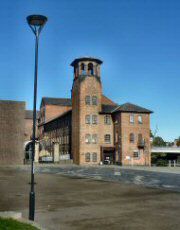
3. At the top of Full Street turn left past the Dolphin, Derby’s oldest surviving public house. On reaching Derby Cathedral with its splendid Bakewell Gates at the entrance. Many interesting features and monuments are housed in the cathedral, including Bess of Hardwick’s Monument, Joseph Wright’s Tombstone, the Bakewell Screen and much more. In 1978, the outer part of the Cavendish burial vault was converted into a small Crypt Chapel.
4. After visiting the cathedral, turn right down St Mary’s Gate which is a rather narrow street. It is one of Derby’s most important historic thoroughfares, containing many fine buildings. Traditionally known as the home to legal practices, the number of practices has declined in recent years. The Shire Hall, near the bottom of the street, later known as the Crown Hall, was originally used for concerts, plays, and gatherings, as well as courts and assizes. This ended in 1714 when the new Assembly Rooms were built. The buildings then became exclusively a Crown Court. The courts closed in 1989 and moved to the Morledge, Since, then the premises have been superbly renovated and converted into the city’s Magistrates’ Court.
5. On reaching the bottom of the street, turn left along Bold Lane and right at the next turn into Cheapside and then right into Friar Gate. On the corner is St Werburgh’s Church which closed for worship in the 1980s. A Trust cares for the tower and the old chancel. It was here that Doctor Johnson, the creator of the English Dictionary, married Elizabeth ‘Tetty’ Porter on 7 July 1735. Marks on the exterior walls are thought to have been made by cannonballs during the Civil War.
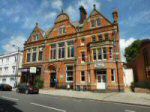
6. Continue up Friar Gate past the former Derby Gas, Light and Coke Company showrooms and offices. Built in 1889, the name of the company can still be seen on the wall. The first public gas lamp was lit in the marketplace, on 19 February 1821. Twenty years later, an Act of Parliament allowed Derby Gas, Light and Coke Company to supply customers outside the Borough, leading to further expansion. Gell’s House is soon passed. It is Derby’s finest surviving complete 17th-century townhouse and served as Parliamentary headquarters during the English Civil war.
7. On reaching the inner ring road turn right. Do not cross the inner ring road until you reach the crossing by the Joseph Wright Centre. The name originates from the internationally famous, local artist whose work in the mid to late 18th century was inspired by scientific and technological art forms. Once over the road, turn sharp right up St Helen’s Street past Radio Derby and the Friends Meeting House. The Quakers, as they were later called, began by holding small meetings in private rooms. Until numbers had grown sufficiently for them to acquire premises. Derby was one of the first places where faith was established. In the early 1800s, The Friends Meeting House in St Helen’s Street was built for the Quakers. It is believed to contain masonry of considerable antiquity from the old Hospital of St Helen.
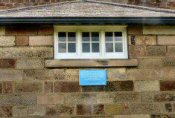
8. At the top cross the inner ring road and walk straight ahead St Helen’s House is to your left. It is, a designated Grade I listed building built in 1766/7, to the design of the Derby-based architect Joseph Pickford. In 1803, it became the home of William Strutt and his son, Edward, and sixty years later of Derby Grammar School, after moving from their original premises in St Peter’s Churchyard. After the school departed it served several other purposes. Unfortunately, the steady deterioration of the building eventually led to its closure and it remained in the hands of Derby City Council for several years. Until November 2006, when it was sold to Richard Blunt, a developer with a good reputation as a restorer of threatened historic buildings. On completion, the developer was presented with the George Rennie Award for outstanding conservation work. Further awards came from the Georgian Architectural Group and the Derby Civic Society. The property is now occupied by Smith Cooper Accountants.
9. Continue forward down Bridge Gate past St Mary’s Roman Catholic Church. The foundation stone for the church was laid on 4 July 1838, Queen Victoria’s Coronation Day and was completed by 9 October 1839. It was the first major church designed by Augustus W.N. Pugin. At the official opening Doctor Wiseman (later Cardinal), said: “St Mary’s, without exception, was the most magnificent thing that Catholics have yet done in modern times in this country.” From this point maintain the same direction along the path that runs parallel with the inner ring road (if the footpath is closed use Handyside Street at the rear and turn right at the bottom). At the end of the path, turn left along Sowter Road and then right back to the start of the walk.
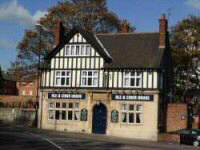
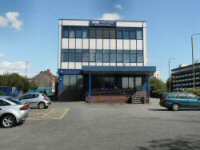
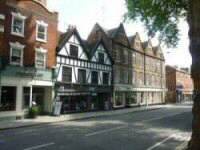
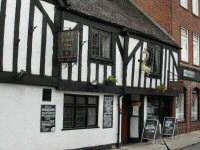
REFRESHMENTS
The Museum of Making at Derby Silk Mill is located by the River Derwent facing Cathedral Green. For more information visit: www.derbymuseums.org/museum-of-making/visit or telephone 01332 641901.
Ye Olde Dolphin Inne is on Queen Street close to Derby Cathedral. For more information visit: www.yeoldedolphin.co.uk or telephone 01332 267711.